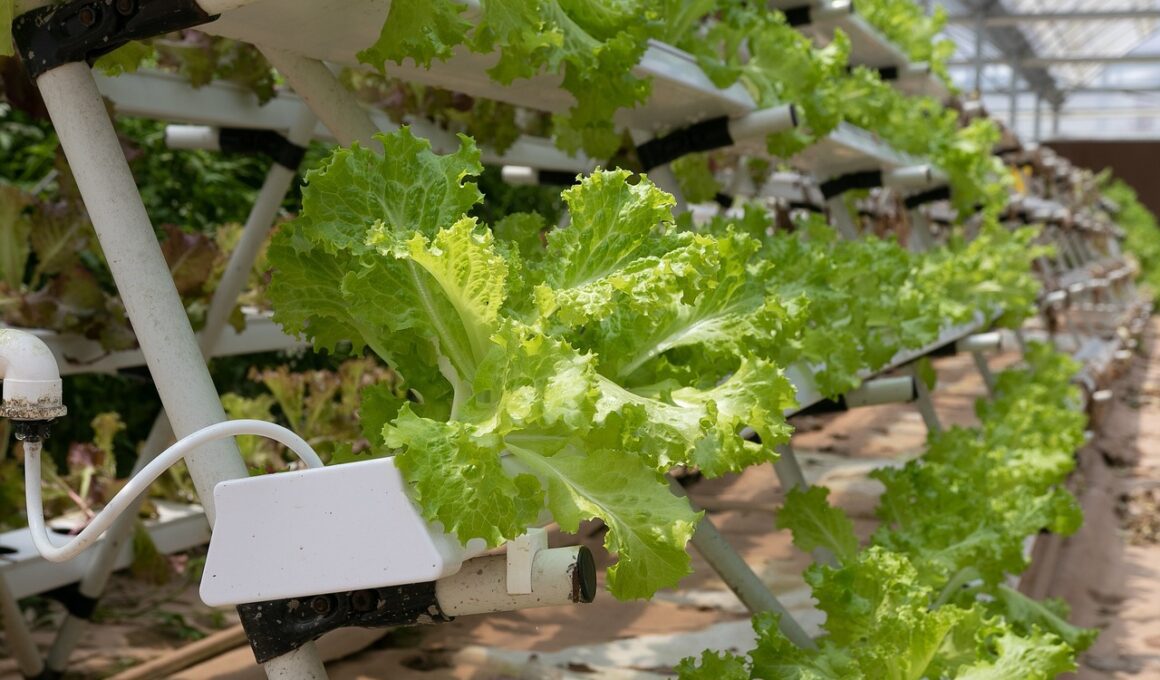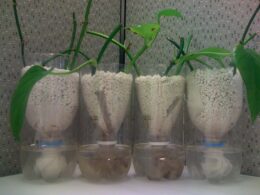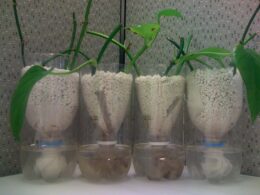Are you interested in hydroponics but worried about the health of your plants’ roots? One of the biggest concerns for hydroponic gardeners is the risk of root rot, a condition that can quickly kill plants and ruin your entire system. But fear not, because roots in hydroponics systems are actually less prone to rot than roots in soil.
Why is this the case? It all comes down to the science of root health in hydroponics. By understanding the unique environment of a hydroponic system and the ways in which it differs from soil-based growing, you can take steps to ensure that your plants’ roots stay healthy and disease-free.
In this article, we’ll explore the common causes of root rot in hydroponics, as well as prevention strategies and treatment options to help you keep your plants thriving.
So sit back, relax, and learn how to create a safe and healthy home for your hydroponic garden.
Understanding the Science of Root Health in Hydroponics
Understanding the science behind maintaining healthy roots is crucial in the world of hydroponic cultivation. Unlike traditional soil-based farming, hydroponics relies on a nutrient-rich solution to feed the plants directly through their roots. Therefore, root anatomy plays a crucial role in the success of hydroponic cultivation.
Roots are responsible for anchoring the plant in place and absorbing the necessary nutrients from the growing medium. In hydroponics, the growing medium is often a nutrient-rich solution, which means that roots have to work harder to absorb the nutrients they need to thrive. Fortunately, hydroponic systems are designed to optimize nutrient uptake mechanisms, ensuring that roots have access to the necessary nutrients at all times.
In addition to nutrient uptake, hydroponic systems also control the environment in which roots grow. By maintaining optimal pH levels, temperature, and oxygenation, hydroponic growers can prevent root rot and other common problems associated with soil-based farming. As a result, healthy roots in hydroponics are less likely to rot and more likely to produce healthy, high-yielding plants.
Common Causes of Root Rot in Hydroponics
Hydroponic gardeners, beware! There are several factors that can lead to the devastating occurrence of root rot.
One of the most common causes of root rot in hydroponics is overwatering. When the roots are constantly submerged in water, they become deprived of oxygen, leading to suffocation and rotting. It’s essential to monitor the water levels in your hydroponic system and ensure that the roots have enough oxygen to breathe.
Another factor that can contribute to root rot in hydroponics is pH imbalances. The roots of your plants require a specific pH level to absorb nutrients effectively. If the pH level is too high or too low, it can lead to nutrient deficiencies and weaken the plant’s immune system. A weakened immune system makes it easier for harmful bacteria and fungi to attack the roots, leading to rot.
To prevent root rot in your hydroponic system, it’s crucial to maintain optimal growing conditions for your plants. It’s important to avoid overwatering and ensure that the pH levels in your system are within the appropriate range. Regularly checking the health of your roots and taking preventative measures, such as using beneficial bacteria and fungicides, can also help keep your hydroponic garden healthy and thriving.
Remember, a little effort in maintaining your hydroponic system can go a long way in preventing root rot.
What Can I Do to Prevent Rotting in Hydroponic Lettuce?
To prevent hydroponic lettuce rotting, ensure a clean growing environment by sterilizing equipment and using clean water. Maintain proper water oxygenation and drainage to avoid waterlogged roots. Consistent monitoring of nutrient levels, pH, and temperature is crucial. Implementing good hygiene practices, such as removing dead leaves and debris, will minimize the risk of rot.
Prevention Strategies for Root Rot in Hydroponics
To prevent your hydroponic garden from falling victim to root rot, make sure to implement effective prevention strategies and maintain optimal growing conditions. Here are three root rot prevention techniques that you can use to keep your plants healthy:
-
Keep your hydroponic system clean: Regularly clean and disinfect your hydroponic system to prevent the growth of harmful bacteria and fungi. Use a mild bleach solution or a commercial hydroponic system cleaner to sanitize your equipment.
-
Use high-quality water: The quality of the water you use in your hydroponic system can affect the health of your plants. Make sure to use clean, pH-balanced water that is free from contaminants and pathogens.
-
Provide adequate oxygenation: Roots need oxygen to thrive, and a lack of oxygen can lead to root rot. Make sure your hydroponic system provides adequate oxygenation by using an air pump or other aeration system.
In addition to these techniques, it’s important to monitor your plants regularly and take action if you notice any signs of root rot. This may include removing affected plants, adjusting nutrient levels, or making other changes to your hydroponic system.
By taking a proactive approach to hydroponic system maintenance, you can prevent root rot and ensure the health and vitality of your plants.
Treatment Options for Root Rot in Hydroponics
If you’ve noticed root rot in your hydroponic system, don’t panic. There are several treatment options to consider.
First, try using beneficial microbes to fight off the harmful ones causing the rot.
Next, consider pruning affected roots to prevent further damage.
Finally, adjusting nutrient levels can also help your plants recover from root rot.
Using Beneficial Microbes
Using beneficial microbes is essential for maintaining healthy plants in a hydroponic system. These microbes help create a diverse and thriving ecosystem in the plant roots, which prevents the growth of harmful bacteria and fungi causing root rot.
Here are some ways that using beneficial microbes can help prevent root rot in your hydroponic system:
-
Microbial inoculation: Introducing beneficial microbes into your hydroponic system creates a healthy and diverse ecosystem in the plant roots. This helps prevent the growth of harmful bacteria and fungi that can cause root rot.
-
Nutrient supplementation: Beneficial microbes break down organic matter in the plant roots, releasing important nutrients that the plants need to grow. This helps prevent nutrient deficiencies that can weaken the plants and make them more susceptible to root rot.
-
Increased plant growth: Beneficial microbes stimulate plant growth and increase the overall health of the plants. This helps prevent root rot by creating a strong and healthy root system that is better able to resist disease.
-
Improved water quality: Beneficial microbes break down organic matter in the water, reducing the risk of contamination and improving the overall quality of the water in your hydroponic system.
-
Reduced need for chemicals: Using beneficial microbes reduces the need for chemical pesticides and fungicides, which can be harmful to both the plants and the environment.
By incorporating beneficial microbes into your hydroponic system, you can create a thriving ecosystem in the plant roots that is better able to resist disease and prevent root rot. This leads to healthier plants, better yields, and a more sustainable and environmentally friendly way of growing.
Pruning Affected Roots
You can keep your plants healthy by trimming any damaged or affected parts of the roots in your hydroponic system. Root pruning techniques are effective in preventing the spread of root rot and other diseases that can affect your plants. It is important to regularly check the roots of your plants to ensure that they are healthy and free from any signs of rot or damage.
When pruning the roots, it is important to use clean and sharp tools to avoid further damage. It is also essential to cut only the affected part of the root and leave the healthy parts intact. Root pruning may have an impact on plant growth and yield, but it is a necessary step in maintaining the overall health of your hydroponic system. Check out the table below for a quick guide on root pruning techniques and their impact on plant growth and yield.
| Root Pruning Technique | Impact on Plant Growth | Impact on Yield | ||
|---|---|---|---|---|
| Tip pruning | Promotes branching and root growth | May increase yield | ||
| Air pruning | Stimulates root growth and prevents root circling | May increase yield | ||
| Root washing | Removes excess nutrients and debris | May reduce yield temporarily | However, it can improve overall plant health and prevent disease. |
Adjusting Nutrient Levels
Adjusting nutrient levels is crucial for maintaining the health and growth of your plants in a hydroponic system. Proper pH management is essential, as it affects the availability of nutrients for your plants.
If the pH is too high or too low, your plants may experience nutrient deficiencies that can stunt their growth or even kill them. To prevent nutrient deficiencies, it’s important to monitor the pH level of your hydroponic system regularly.
You can adjust the pH by adding pH up or down solutions to your nutrient solution. Additionally, you should also be aware of nutrient deficiencies and adjust your nutrient levels accordingly.
Some signs of nutrient deficiencies include yellowing leaves, stunted growth, and reduced yield. By adjusting your nutrient levels and pH management, you can ensure that your plants thrive in your hydroponic system.
Best Practices for Ensuring Healthy Roots in Hydroponics
To maintain thriving plants in your hydroponic system, it’s important to establish healthy root growth through proper techniques and strategies.
Choosing the right substrate is essential to ensure that your roots have a stable and secure environment to grow in. Coconut coir, rockwool, and perlite are all great options for hydroponic substrates. These materials provide excellent drainage, aeration, and water retention capabilities, which are crucial for healthy root development.
Monitoring pH levels is also crucial for the health of your hydroponic roots. The optimal pH range for most plants grown hydroponically is between 5.5 and 6.5. If the pH level is too high or too low, it can cause nutrient deficiencies, which can negatively impact root growth.
Regularly testing and adjusting the pH level of your hydroponic solution is critical to ensure that your plants have the necessary nutrients to thrive.
In addition to selecting the right substrate and monitoring pH levels, there are other best practices you can follow to ensure healthy root growth in your hydroponic system. These include providing adequate oxygenation through the use of air stones, avoiding overcrowding of plants, and maintaining a clean and sterile environment.
By implementing these strategies and techniques, you can ensure that your hydroponic roots remain healthy and strong, leading to thriving plants and a successful harvest.
Frequently Asked Questions
What are the benefits of hydroponic gardening compared to traditional soil gardening?
If you’re looking to start a garden, you may want to consider hydroponic gardening. The benefits and advantages of hydroponics compared to traditional soil gardening are numerous.
One of the most significant advantages is the ability to control the environment. With hydroponics, you can use techniques and innovations like nutrient solutions, LED lighting, and automated systems to create the optimal growing conditions for your plants.
This means that you can grow more plants in less space, with less water, and less soil. Plus, since hydroponics doesn’t rely on soil, you don’t have to worry about soil-borne diseases or pests.
Overall, hydroponic gardening provides a safe, efficient, and rewarding way to grow your own produce.
Can hydroponic systems be used for growing all types of plants, or are there limitations?
Looking to start hydroponic gardening? While hydroponics can be used to grow a wide variety of plants, there are some limitations to hydroponic growth.
For example, some plants require more root space than hydroponic systems can provide, while others may not thrive without soil. However, there are plenty of plant choices that are ideal for hydroponics, such as lettuce, herbs, and strawberries.
As long as you choose the right plants and provide the proper nutrients, hydroponic gardening can yield great results. So, if you’re looking to try hydroponic gardening, do a little research on the best plant choices and the limitations of hydroponic growth to ensure success.
How often should the nutrient solution be changed in a hydroponic system?
To prevent nutrient solution contamination and ensure healthy plant growth in your hydroponic system, it’s important to change the solution regularly. The optimal frequency for changing the solution depends on several factors, including the size of your system and the type of plants you’re growing.
As a general rule, you should change the solution every two to three weeks. Additionally, it’s important to monitor the temperature of the nutrient solution. The optimal temperature range for the solution is between 65 and 75 degrees Fahrenheit.
If the solution becomes too hot or too cold, it can negatively impact plant growth and increase the risk of contamination. By regularly changing the nutrient solution and maintaining an optimal temperature, you can create a safe and healthy environment for your hydroponic plants to thrive.
Are there any natural remedies for preventing or treating root rot in hydroponics?
Looking for natural remedies to prevent or treat root rot in your hydroponic system? There are several prevention strategies you can try.
First, make sure to keep your nutrient solution at the proper pH level and change it regularly to prevent the buildup of harmful bacteria. Additionally, using beneficial bacteria supplements or adding hydrogen peroxide to your system can help combat root rot.
Some growers also swear by using neem oil or cinnamon as natural fungicides. By taking proactive steps to prevent root rot, you can ensure the health and safety of your plants in your hydroponic system.
What is the best way to monitor the pH level of the nutrient solution in a hydroponic system?
To ensure the success of your hydroponic system, it’s crucial to monitor the pH level of your nutrient solution regularly. While pH meters are the most accurate and reliable method for measuring pH, there are alternative monitoring methods that can be used.
For example, you can use indicators such as litmus paper or pH strips, which change color based on the pH of the solution. However, these methods are less accurate and may not give you a precise reading. To avoid any potential problems, it’s best to invest in a good quality pH meter and calibrate it regularly.
By monitoring the pH level of your nutrient solution, you can prevent nutrient deficiencies, ensure optimal plant growth, and avoid any potential problems that may arise due to pH fluctuations.
Conclusion
Congratulations! You’ve learned about the science of root health in hydroponics and how to prevent and treat root rot. By understanding the importance of oxygen, pH levels, and sanitation, you can ensure that your plants have healthy roots and thrive in your hydroponic system.
Remember to regularly check your nutrient solution, clean your system, and monitor your plants for any signs of stress or disease. If you do encounter root rot, don’t panic! There are several treatment options available, such as hydrogen peroxide or beneficial bacteria.
By following these best practices, you can enjoy a successful and rewarding hydroponic gardening experience with strong and healthy roots.
Happy growing!









